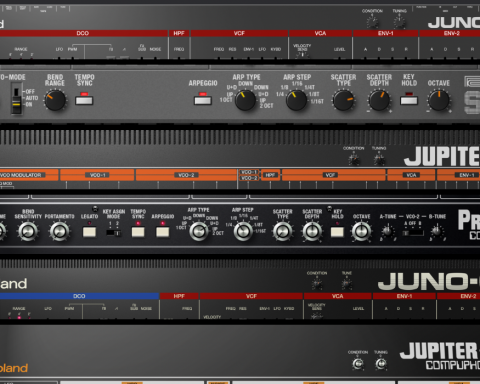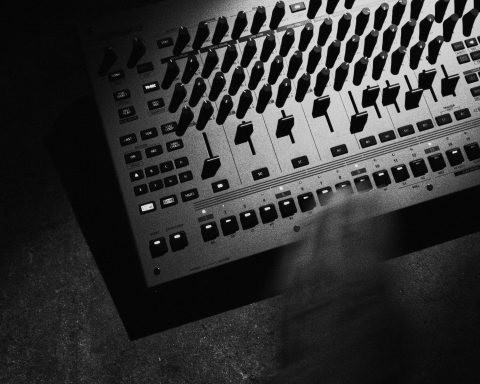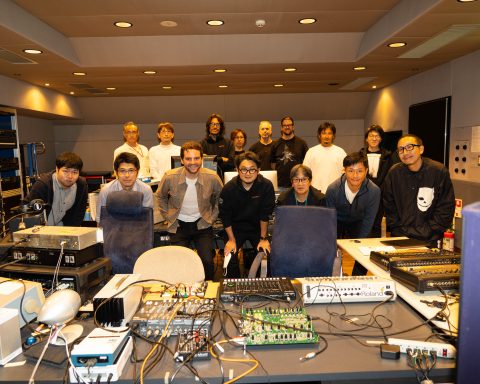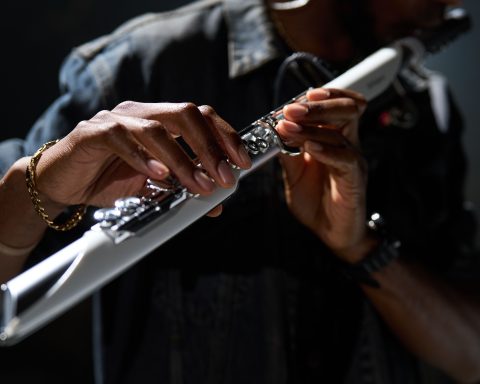From BOSS product to Roland mainstay, the SP series has had a wild ride. What began with the Dr. Sample SP-202 and SP-303 eventually evolved into the SP-404 as we know it. That instrument, of course, birthed the imaginative lo-fi and instrumental hip-hop scenes. Scores of beatmakers elevated the box to legendary status. Yet there are many mysteries about its development. Roland’s Engineering team answer questions about some of the most intriguing aspects of the iconic SP series.
Number Theory
Why are the pad numbers on the SP-404 lined up from the top?
Roland Engineering: There are some devices with numbers lined up from the top and others with numbers lined up from the bottom. For example, calculator button numbers start from the bottom, while telephone numbers are from the top. Our developers wondered, “What’s the difference between them?” We discussed the order of the SP pad numbers many times, like a Zen dialogue.
Is the layout important to beatmaking?
When users make a beat with kick, snare, and drums, it makes sense to have the sounds assigned from the front side with 4×4 pads. For the SP-606 and FANTOM series, the main focus was on beatmaking. The numbering system emphasizes the front, with the bottom left being number 1.

How did the order evolve over time?
The SP-404 pad order came from the SP-202 and SP-303. In essence, the SP-202 and SP-303 were tools for playing loops and sound effects that synthesizers could not produce. The engineers at the time thought that the pads lined up in order from top to bottom would be useful for organizing sounds. Today, the SP-404SX is primarily a beatmaking tool. As a successor to the SP-202 and SP-303, it inherited the top left number 1.
"We discussed the order of the SP pad numbers many times, like a Zen dialogue."
From BOSS to Roland Brand
What’s the timeline of how the SP series went from a BOSS brand to a Roland brand?
In the early days of the SP series, the SP-202, SP-303, and SP-505 came out as BOSS products. The only exception was the SP-808 which Roland released. After the SP-606 in 2004, the synthesizer development team got transferred from BOSS. As a result, the SP series moved to Roland. Roland has been in charge of the development of the SP series since.
In the early 2000s, our synthesizer development teams focused on products for R&B and hip-hop beatmaking. At the time, samplers were the mainstay of beatmaking and DAWs were growing as production tools. We developed the SP-606 as a new tool for beatmaking and production through the integration of software and hardware.

Sampler+Effector
We’ve heard the Sampler+Effector concept came from the BOSS-era. Is that true?
In addition to the Sampler, the unique Effector has been key to the SP series since the SP-202. One feature that characterizes it is the EXT SOURCE button. The SP series Effector is capable of linear effect processing, but not only for the sampler section. It also works for sounds inputted directly from the EXT SOURCE.
Real-time performance using only the EXT SOURCE button and unique effects are part of many modern musical scenes. These are examples of the characteristic use of the SP series.
"The SP-404SX effects section came from a high-end synthesizer. We tuned it to match the SP's identity."
The SP-404 is often used in performances with one-shot samples. However, its SAMPLE MODE settings can only use the GATE and LOOP buttons. There is no one-shot setting. SPs have an unusual specification that allows you to turn off both for one-shot playback.
This is another feature that came from the SP-202. As mentioned, the SP-202 was to be a sampler for looping materials and sound effects that synths couldn’t create. The buttons that were best for these functions—like GATE and LOOP—came to the forefront of design.
404 and 404SX Differences
What are some of the differences between the SP-404 and SP-404SX?
Actually, they’re completely different. The design of the panel itself is almost identical to the SP-404 and SP-404SX. However, many elements are refreshed. In particular, the effects section came from a high-end synthesizer. We tuned it to match the SP’s identity.

DJFX LOOPER
How did the DJFX LOOPER effect come into being?
The popular DJFX LOOPER effect, which is on the SP-404SX, was first featured on the SP-404. Originally, it was one of the effects we developed as a delay. We named it “DJFX LOOPER” because you could play it with knobs and it had a unique sound. Even though it was quietly installed at the end of the MFX group (number 24), it became popular with the SP-404.
On the SP-404SX, we placed a special button on the front of the panel. This made the effect an important feature when discussing the SP-404SX.
"Customers said they liked the lo-fi sound of the SP-303. We included the LO-FI button as a function to produce lo-fi as a sound character."
What are the functions and purposes of the LO-FI button?
The LO-FI button looks the same on both the SP-404 and SP-404SX, but the function is very different. The LO-FI on the SP-404 was a setting button to extend the recording time instead of reducing the sound quality. As a result, users could not change it after sampling. On the SP-404SX, the button creates a “lo-fi” sound. It’s a button users can turn on and off even after sampling. The sampling time is not extended.
As time went on, greater memory capacity became available. On the SP-404SX, there was no need to reduce sound quality to increase sampling time. However, after the release of the SP-404, customers said they liked the lo-fi sound of the SP-303. The SP-404SX aims to have the lo-fi sound of the 303. We included the LO-FI button as a function to produce lo-fi as a sound character.

Custom Culture
How aware were the developers of the SP-404 customization culture?
We didn’t set out to make an easily removable panel. This was never the intention. The only reason we used screws on the panel was that we had no other choice. We had to use them to realize the final design.
That said, even when designing it, the developers thought it could be fun to use as a secret trick. As a result, stickered and painted versions of the SP-404 became popular. This customization is now a way to enjoy the SP-404.
"The SP-404 panel can be removed, but this was never the intention. Still, the developers had in mind that it could be a fun secret trick."
What inspired the illuminated light in the center of the SP-404?
When we were developing the SP-404, it seemed like hip-hop studios all had lights that wavered and moved. We designed the illumination at the SP-404’s center with an awareness of organic movement. It’s there to show off the presence of the SP-404 as a quiet companion, even when it’s not playing.







